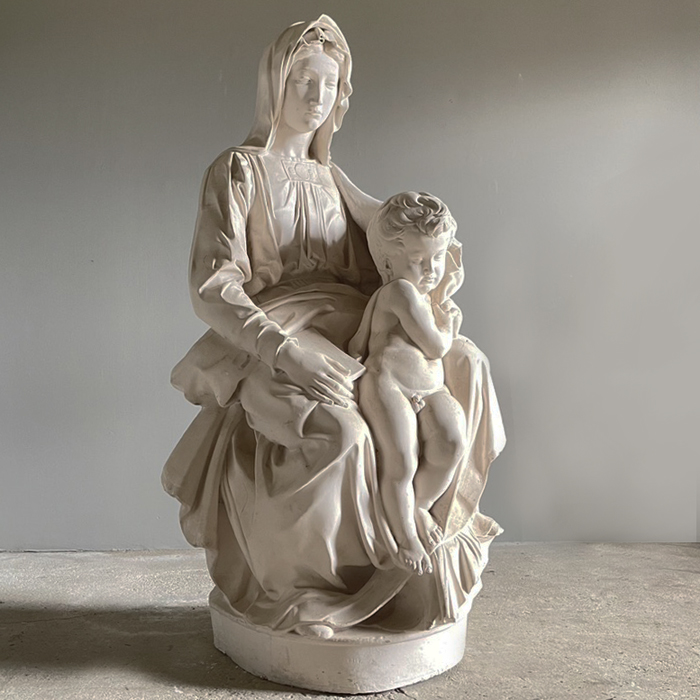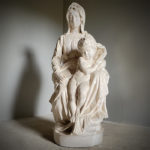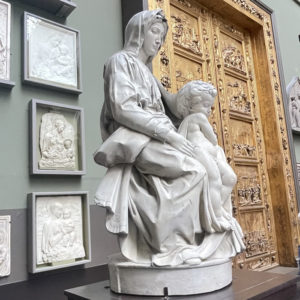
Dimensions: 130cm (51¼") High, 65cm (25½") Wide, 68cm (26¾") Deep
Price: £4,980
Stock Code: 46642


History
This casting probably comes from the same mould as the figure on display in the Cast Courts of the Victoria and Albert Museum – insofar as a mould was known to have been made in 1871 by a Bruges-based casting workshop and it is unlikely that a mouldmaker has been allowed near the original marble masterpiece since. Unlike the V&A casting, this figure has been largely chased of its mould-marks.

When first carved in 1504-6 in Rome the marble original represented a new take on the Madonna and Child sculptural subject. Michelangelo daringly breathed life and humanity into a form that was previously somewhat formulaic. The Virgin Mary appears relaxed and gently holds the Christ figure, here a toddler, against her leg. She gazes serenely and, with Jesus, confronts the viewer – rather than the Mother and baby Jesus looking to each other.
Michelangelo was commissioned to carve this piece by brothers Jean and Alexandre Mouscron – wealthy Flemish Cloth merchants with outlets in Florence and Rome as well as Bruges. This was the first of Michelangelo’s works to leave Italy in the sculptor’s own lifetime – it was shipped and installed in the Church of Notre-Dame in 1506.
The group was later to fall under the acquisitive gaze of both Napoleon in the early 19th Century, when it was transported to Paris but returned after Waterloo, and by Hitler in the 1940’s when it ended-up being hidden in a Polish salt-mine. A team of Allied investigators went after it in order to prevent its disappearance and possible destruction in the final months of the war – ensuring its return to Bruges.
John Charles Robinson (1824-1913) – the first curator of The South Kensington Museum, seems to have had a hand in the initial commissioning of the mould, or at least the acquisition of the cast from the Royal Belgian Commission, although the mouldmaking and acquisition was finally undertaken in 1872 after his tenure at the Museum ended in 1869. Robinson described the sculpture as “one of the most highly finished, complete and most beautiful works of the great master”. It was acquired as part of the reciprocal “International Exchange Scheme” initiated by Henry Cole in 1867. A value of £40 was attributed to the cast as part of that exchange.
